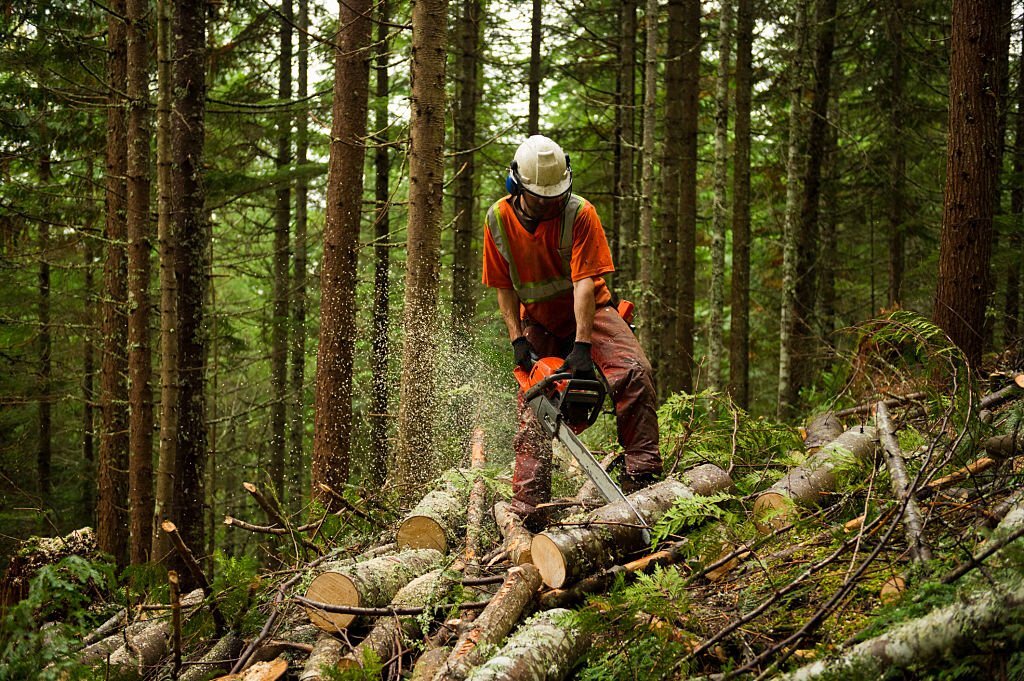
Introduction
Logging equipment forms the backbone of the forestry industry, facilitating the extraction and transportation of timber with efficiency and precision. The size and weight of this equipment significantly impact its functionality and performance in the logging process. Heavy machinery must navigate challenging terrains, handle large loads, and maintain environmental sustainability. In this article, we will explore how the size and weight of logging equipment affect its functionality, delve into the mechanics behind these factors, and understand their implications for safety and sustainability in the logging industry.
The Role of Size in Logging Equipment Functionality
Maneuverability and Access
The size of logging equipment directly influences its maneuverability through dense forests and rugged terrains. Smaller machines, such as skidders and mini harvesters, have the advantage of navigating tight spaces and accessing hard-to-reach timber stands. Their compact design allows operators to work effectively in confined areas, reducing the chances of damage to surrounding trees.
On the other hand, larger equipment, like full-size harvesters and forwarders, excels in open areas with fewer obstructions. They can handle substantial timber volumes and work efficiently in more extensive logging operations. However, their size may limit access to narrower trails, leading to the need for careful planning and road construction in advance.
Timber Extraction Efficiency
The size of logging equipment also affects the efficiency of timber extraction. Larger machines can process more significant timber volumes per cycle, reducing the number of trips needed to transport the wood. This increased capacity improves productivity and optimizes fuel consumption, resulting in cost savings for logging companies.
Conversely, smaller equipment may require more frequent trips to transport the same amount of timber, potentially increasing operational costs and fuel consumption. However, their agility in difficult terrains and limited environmental impact can offset these drawbacks, making them ideal for certain logging scenarios.
Impact on Ground Pressure
The weight of logging equipment significantly affects its ground pressure, which is the force applied per unit area of the ground. Heavy machinery can exert substantial pressure, leading to soil compaction and damage to delicate root systems. In ecologically sensitive areas or during wet weather, high ground pressure can result in soil erosion and degradation, adversely impacting the forest ecosystem.
To mitigate this impact, logging companies use low-ground pressure equipment or employ techniques like tire inflation adjustments to distribute weight more evenly. Lighter machines, such as cut-to-length harvesters with thinning heads, can also help minimize soil disturbance and preserve the forest floor’s integrity.
Transportation and Log Hauling
The weight of logging equipment plays a critical role in transportation and log hauling. Heavier machines require more robust transportation vehicles and specialized trailers to move them between logging sites. This adds to the logistics and expenses involved in moving equipment to remote locations.
On the other hand, lighter equipment can be easily transported, enabling quicker setup at various sites and reducing the need for specialized transport. However, in larger operations, where higher capacity machines are necessary, careful planning and efficient logistics are essential to optimize equipment movement and minimize costs.
Safety Considerations
The size and weight of logging equipment directly impact safety considerations for operators and workers on-site. Larger machines may pose a higher risk in terms of potential accidents, such as rollovers or tip-overs. Operator training and adherence to safety protocols are crucial in mitigating these risks and ensuring the well-being of the workforce.
Smaller equipment, though generally considered safer due to their maneuverability, can still present hazards in certain situations. Inexperienced operators or insufficient training may result in accidents even with smaller machinery. Regular maintenance and thorough inspections are essential for all equipment sizes to identify and address potential safety issues proactively.
Environmental Sustainability
The size and weight of logging equipment significantly influence its environmental impact. Heavy machinery can disturb the forest floor, damage sensitive habitats, and increase the risk of soil erosion. Moreover, large machines may require wider access roads, leading to additional deforestation and fragmentation of natural habitats.
To promote environmental sustainability, logging companies opt for practices that balance the use of heavy and light machinery. Selective logging, where smaller equipment is preferred for sensitive areas, helps minimize ecological disruption. Companies also implement measures like the use of specialized tracks or tires to reduce soil compaction and protect the forest ecosystem.
Balancing Functionality and Sustainability
Achieving a balance between functionality and sustainability is a paramount goal in the logging industry. Logging companies strive to employ the right combination of heavy and light machinery to optimize productivity while minimizing environmental impact. Additionally, the integration of modern technology, such as GPS guidance systems and telemetry, enables precise and efficient logging practices regardless of equipment size.
Innovations and Future Trends
The logging industry continues to evolve, with ongoing efforts to improve the functionality of equipment while enhancing sustainability. Innovations in material technology, such as lightweight composites, offer the potential to reduce the weight of heavy machinery without compromising strength and performance. Autonomous logging equipment is also on the horizon, promising increased efficiency and safety through artificial intelligence and robotics.
Conclusion
The size and weight of logging equipment are crucial factors in determining its functionality, efficiency, and impact on the environment. Smaller machines excel in maneuverability and access to tight spaces, while larger equipment excels in processing substantial timber volumes. Balancing the use of heavy and light machinery is essential to ensure environmental sustainability while meeting the demands of the forestry industry. By understanding the mechanics and implications of size and weight on logging equipment, logging companies can make informed decisions, promote safety, and advance sustainable practices in this vital sector.

